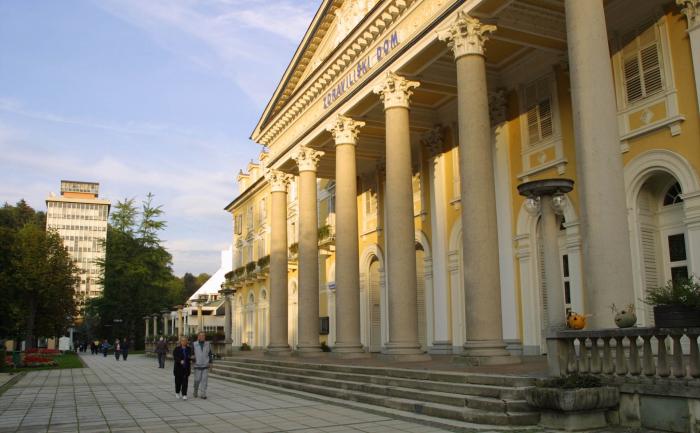
Rogaška Slatina is a resort town known for its parks, promenades, and Art Nouveau building. But what has brought people here for generations is the local mineral water, one of the most famous in Slovenia - and beyond.
The local springs were probably known even in Celtic and Roman times, although the first written mentions date back to the 12th century. By the 16th century, the water drew the attention of alchemists who marveled its mineral properties. According to a local legend, the 17th-century Croatian ruler Peter Zrinski stumbled on the source when he was on a hunt and the healing properties of the water cured him of his ills.
In approximately 1670, Dr. Paul Sorbait, a court doctor to the Hapsburg Emperor, wrote a book that described the healing properties of the water from Rogaška Slatina. His work helped to make the water internationally famous, and for years, Vienna pharmacists has exclusive rights to sell and bottle the water. Members of the nobility and even royalty also began to visit the town, which soon became a renowned spa. Meanwhile, the water started to be exported to many European countries, and by the 18th century, it became the third most popular bottled water in the world. In-depth chemical analyses of the water also confirmed its beneficial properties, and the water was even featured at the 1893 Chicago World’s Fair, where it won a prestigious ward.
Despite its popularity, the water from Rogaška Slatina was bottled by hand into the 20th century. It wasn’t until 1904 that a modern bottling plant was built in the town. Four years later, the Donat spring, with an even higher mineral content, was officially inaugurated. After World War II, however, scientists noticed that the output of the wells was declining and that the mineral water was becoming mixed with rainwater, so several new sources were drilled, ensuring stable output for generations to come.
Even though the water from Rogaška Slatina, now branded Donat MG, is no longer as internationally famous it once was, it is still valued as a treatment for digestive problems – and it’s still exported, continuing a tradition that has spanned centuries and helped to put Slovenia on the map as a water-exporting nation.

































































